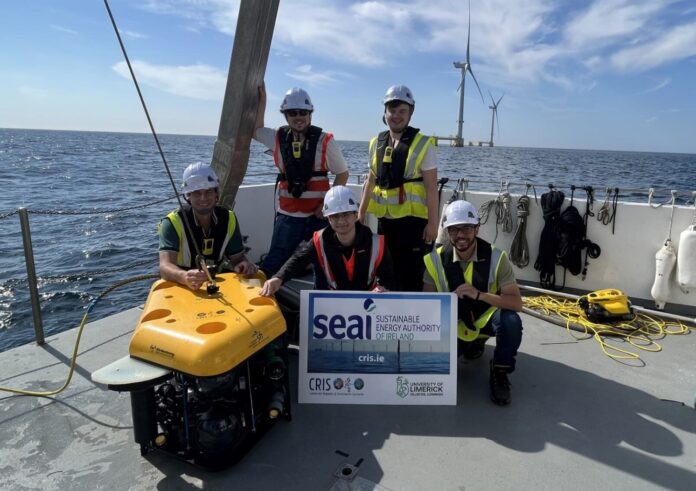
LIMERICK researchers have pioneered a new solution for inspecting offshore wind farms.
The researchers from the University of Limerick (UL) designed the remote-operated vehicle, which was tested successfully at WindFloat Atlantic in Portugal – the world’s first semi-submersible floating offshore wind farm.
A intervention, repair, and maintenance survey at Windfloat Atlantic was carried out by a team from the Centre for Robotics and Intelligent Systems (CRIS) at UL.
Regular inspections and maintenance are vital for offshore wind farms, but these tasks currently rely heavily on human intervention. Now, given the industry’s growth and advancements, there is an increased emphasis on enhancing reliability and reducing operational costs.
The team used a fleet of field robots, subsea remotely operated vehicles (ROVs), and unmanned aerial vehicles (UAVs) to survey the Ocean Winds’ WindFloat Atlantic off the coast of Portugal.
Professor Daniel Toal, co-director of UL CRIS said that the research could also be used to further Ireland’s potential for offshore wind energy.
“The significance of our research should be viewed in the context of Ireland’s existing offshore wind strategy, which aims to achieve 37 gigawatts of offshore renewable energy capacity by 2050. This target also includes six gigawatts of floating offshore wind farms on the west coast and plans for the Shannon Estuary,” Prof Toal said.
“Achieving this goal requires the development of intervention, repair and maintenance capacities and capabilities to ensure offshore operations are efficient and cost-effective.”
Dr Phillipe Santos, chief CRIS scientist for the trials at WindFloat Atlantic, added that “CRIS has been developing exceptional robotic capabilities that can transform the way we approach offshore wind farm inspections”.










